#NatureZen: Delicate Dancers
words and photos by Melissa McMasters
For this edition of #NatureZen, we’re traveling a bit beyond the borders of Overton Park. To find the delicate creatures we’re admiring today, we need access to water, especially rivers and streams. Choose a spot along the Wolf River Greenway, for example, and look down at the trail in front of you or the leaves alongside it: you’re almost guaranteed to see some dancer damselflies.
Dancers are part of the the largest genus of damselflies in the New World, Argia, which means “lazy” in Latin (a misnomer if there ever was one). Some scientists think Argia may instead be a reference to the Greek argos, which means “bright.” Either way, “dancer” makes sense as a common name, as these damselflies have a bouncy flight pattern that’s different from other, more straight-flying damselflies like bluets and forktails.
Although there are more than 100 species of dancers, only six have been recorded here in Shelby County. Let’s meet them!
The three most common dancer species in our area all have “blue” in the name, but the males aren’t hard to tell apart once you know what to look for. The species I encounter most frequently is the blue-fronted dancer. The black stripes on its thorax are much more faint than in the other species, so its “front” really is mostly blue. Females look a lot like males, only they can be either blue or brown.
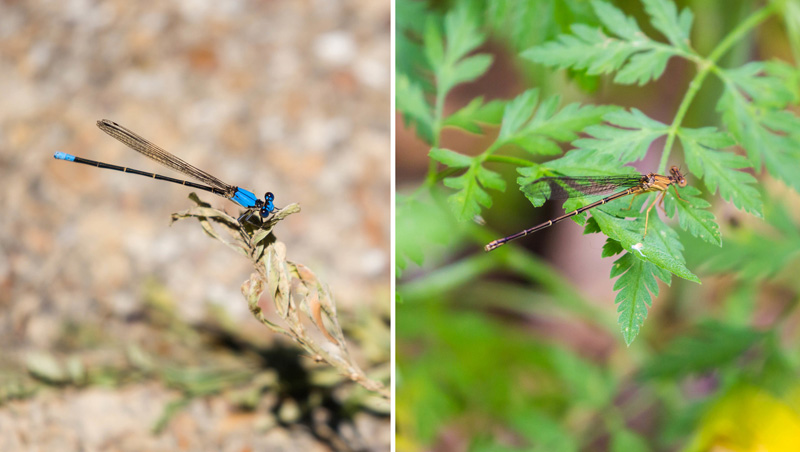
Next most common are blue-tipped dancers, named for the spot of blue on the end of the male’s abdomen . The males of this species are purple, so that’s a great clue; it’s the females that may trip you up here, because they can be brown or blue just like the blue-fronted dancer. A good way to distinguish this species is that both males and females have a little fork in the stripes on the side of their thorax. Do you see where the black stripe looks like it has a piece missing near where the body meets the wing? It’s even more noticeable in the female.
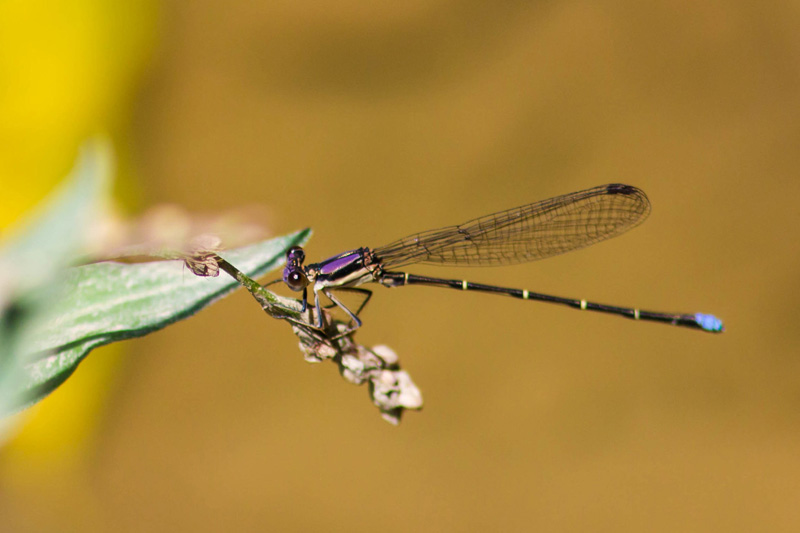
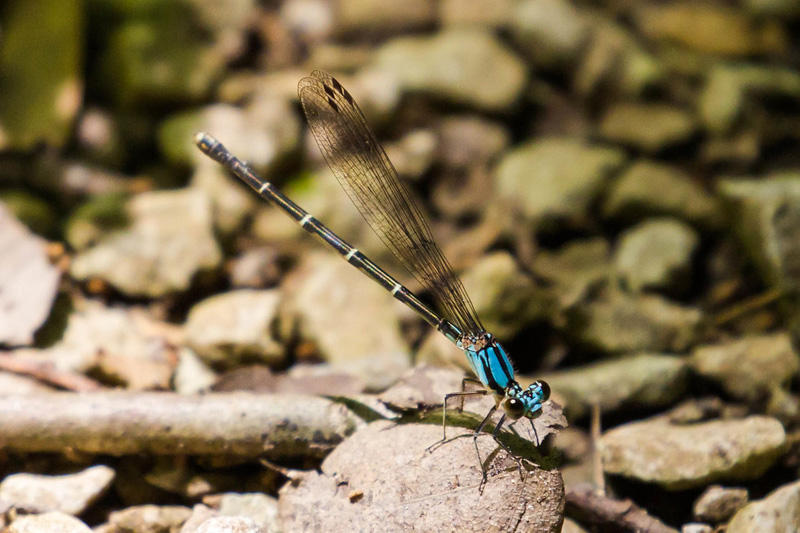
Our third, fairly common damsel is the blue-ringed dancer. The blue in this case is running in circles around the male’s abdomen. Some individuals, like this one, also have beautiful amber-colored wings. Females of this species often look extremely different from males; the amber wings can sometimes be the best clue, but they don’t always have those either!
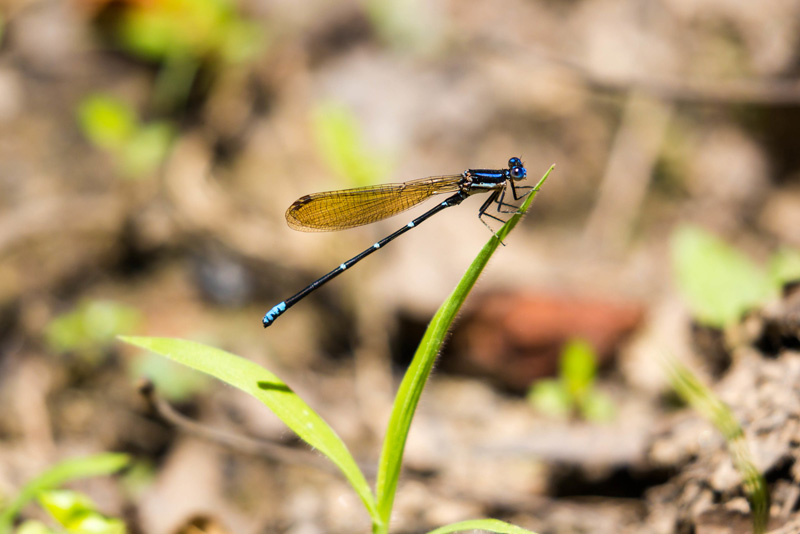
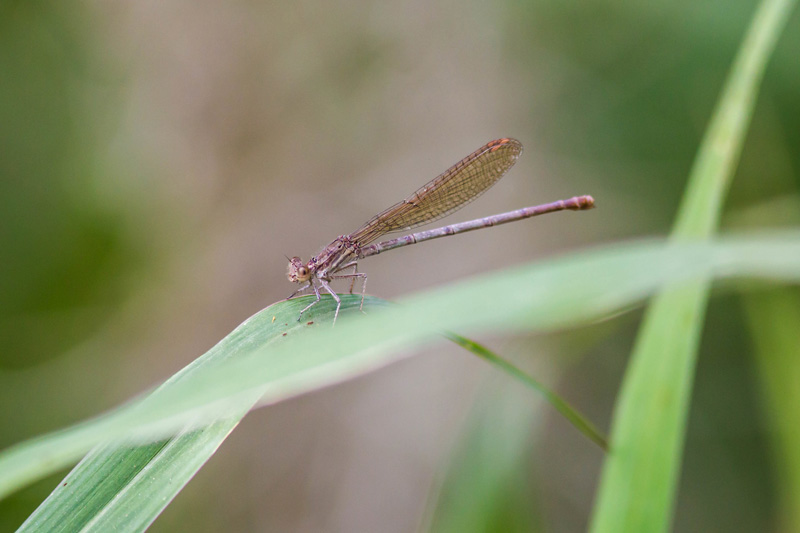
Now to the less common dancers in our area. The powdered dancer is a gorgeous damselfly named for the male’s powdery appearance. This condition is known as “pruinescence,” and in insects it’s caused by wax particles that build up on the outside of the body. Some species are more prone to it than others, and as individuals age they become more pruinose until their original colors are practically obscured. Other things in nature that become pruinose include grapes, blueberries, and the bellies of cicadas.
This male is pretty fresh, so he’s not very pruinose…
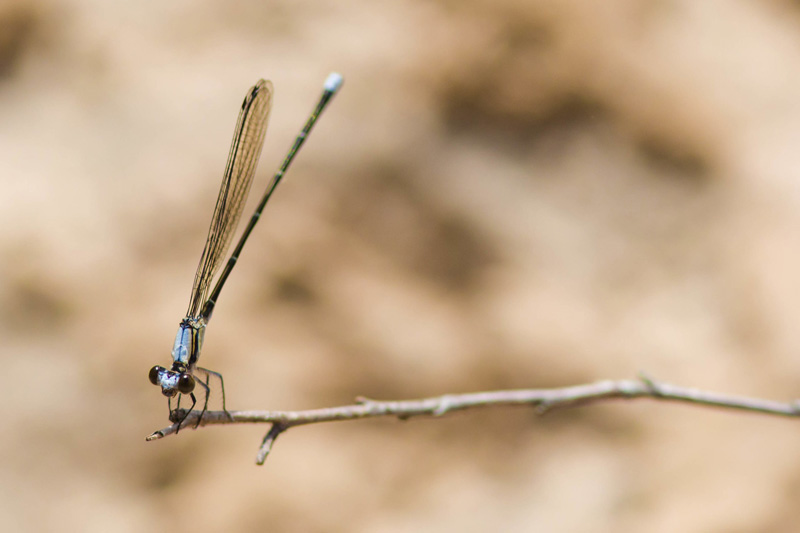
…but you can see that this one is beginning to live up to the name “powdered.”
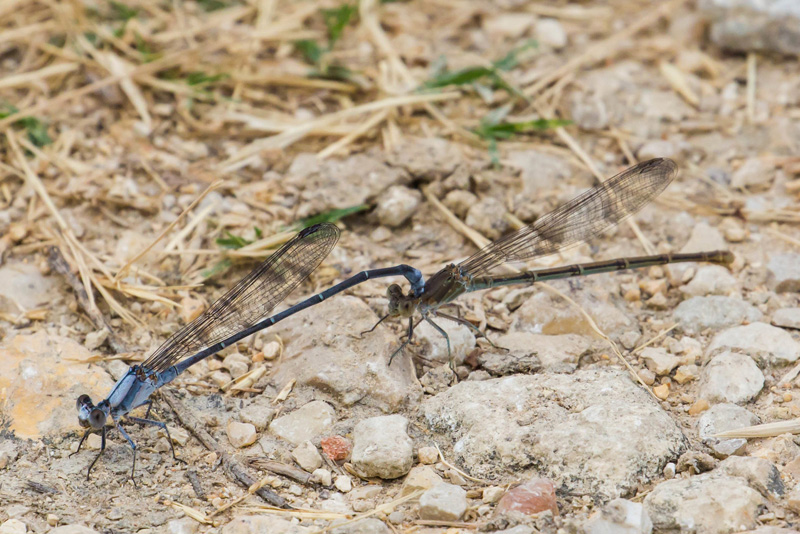
The damselflies above, like these dusky dancers below, are in tandem. This means they’re not actively mating (the female’s abdomen would be attached to the male, and they’d form a wheel), but they’re sticking together either to look for mating sites or to actually lay eggs. It’s hard to catch dancers in a wheel, but easy to see them paired up like this. Dusky dancers are uncommon locally, but their distinguishing feature is the black slash through the blue section on the tip of their abdomen.
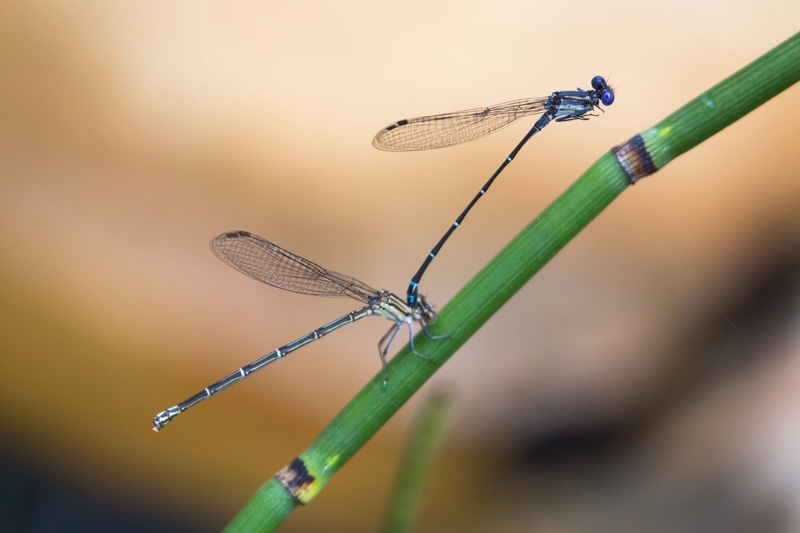
Finally, you might run into a variable dancer, which takes several different forms depending on its geographic area. Males almost always have a violet thorax, but they might have black wings, or black abdomens. This one is the Florida subspecies. While most dancers “clap” their wings occasionally (opening and closing them rapidly after perching), this one does it almost every time it lands. It’s like having a tiny applauding audience!
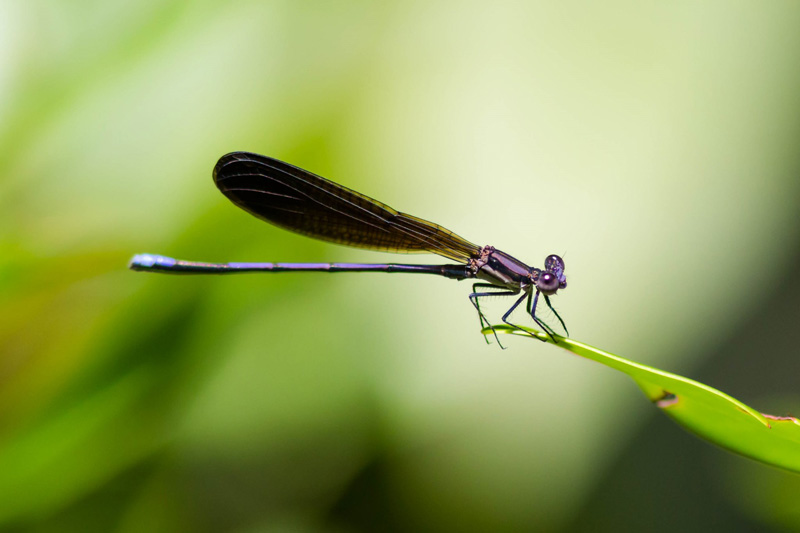
Ready to go damselfly exploring? Odonata Central has a list of all the dragonfly and damselfly species recorded in Shelby County.



